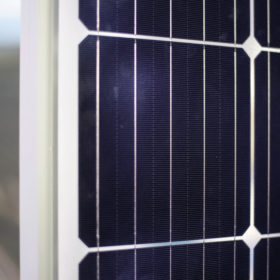
Australian researchers have unveiled hydrogenation technology to reduce light and elevated temperature-induced degradation in Czochralski silicon PERC solar cells. The developers say the process can minimize degradation without sacrificing performance in cells and modules.
Scientists at the University of New South Wales Sydney have developed hydrogenation technology they say reduces light (LID) and elevated temperature-induced degradation (LeTID) in Czochralski silicon solar cells and modules.
The method, the researchers claim, controls the presence of hydrogen by passivating boron‐oxygen defects in cells to enable enhanced bulk defect passivation.
The University of New South Wales (UNSW) Sydney researchers described the technology in the study 23.83% efficient mono‐PERC incorporating advanced hydrogenation, published in Progress in Photovoltaics.
The technique was tested on a commercial p‐type Czochralski silicon (Cz-Si) PERC cell with an efficiency of 23.83% that was produced by Chinese monocrystalline module maker Longi.
The spec
The cell – manufactured with 180‐μm thick p‐type Cz wafers to M2 size (156.75×156.75mm) and a resistivity of 0.5-3 Ω·cm – was measured under standard test conditions at 25 degrees Celsius, under 1000 W/m2 standard solar spectrum illumination in line with the IEC 60904‐3 standard, using a cell calibrated by German testing institute the Fraunhofer ISE.
The proposed laser hydrogenation process was applied to ten finished cells from the production line which had already undergone a more typical hydrogenation process in the belt furnace. “The cells were heated to 250-300 degrees Celsius on a hotplate and illuminated with 3-5 kW of laser power for 1 to 8 seconds,” the researchers stated.
The new, four-second hydrogenation process – carried out with a 3000 W laser at a temperature of 220 degrees Celsius – improved the cells’ overall average efficiency by 0.08%, the researchers reported.
Further testing
To test stability, the PERC cells were then heated to 75 degrees Celsius under a one-sun light‐emitting diode on open circuit for 40 hours. “Controlling the hydrogen content to low levels within the cell is seen to minimize degradation without sacrificing performance and results in cells and modules with around, or less than, 1% absolute LID performance losses,” the scientists said.
They are now planning to investigate how hydrogen is distributed in the silicon material to better understand its behavior and impact.
If LID is not treated, degradation can reach 10% in the first month after installation. To combat this, cell manufacturers add an LID treatment process at the end of cell production to attempt to eliminate the defect.
Lắp đặt điện mặt trời Khải Minh Tech
https://ift.tt/2X7bF6x
0906633505
info.khaiminhtech@gmail.com
80/39 Trần Quang Diệu, Phường 14, Quận 3
Lắp đặt điện mặt trời Khải Minh Tech
https://ift.tt/2ZH4TRU
Không có nhận xét nào:
Đăng nhận xét